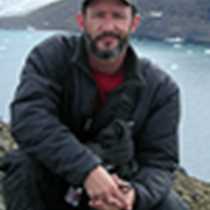Prion Island, South Georgia
“I now belong to a higher cult of mortals, for I have seen the albatross.”
-Robert Cushman Murphy
Of the almost 10,000 species of birds in the world only about 300 are truly considered seabirds. So while 30% of the earth contains 97% of the bird species, the sea is mastered by only a few. These wonderful examples of adaptation, birds that live almost their entire lives above, in, or on the ocean, still need land to breed. Today we had the chance to see two of the greatest, though at different ends of the flight scale.
Our morning began at Salisbury Plain, the second largest king penguin colony on South Georgia, where we were astounded at the sight of tens of thousands of these sometimes curious, sometimes aggressive birds. The largest penguin to be seen on this trip, they hold sway over many of the beaches and glacial drainages of this great island. The kings have an off cycle breeding pattern so the beach had courting birds, mating birds, those with eggs, small chicks, and a large population of the brown fury adult size chicks. The noise of the large chicks and parents calling to one another was deafening at times.
For the afternoon the ship was repositioned just a few miles to one of the small jewels of South Georgia – Prion Island. On this small islet, among many others, in the Bay of Isles lives one of the wonders of nature – the wandering albatross. This bird has the greatest wingspan of any seabird, at more than 11 feet. They can soar for hours over hundreds of miles without a single wing beat in search of food. The chance to see them both fly and land was glorious. The behavior once on the ground was also amazing. The distinctive walk, the sky-calling and sky-pointing with bills pointed high. The yammering vocalizations and the gamming of 4 or 5 individuals to see where each stood in the scheme of things was very different than the usual sights of albatross which is expertly following the ship. Those of us who have now seen the wandering albatross and the king penguin up close have a great appreciation for the true masters of the sea.
“I now belong to a higher cult of mortals, for I have seen the albatross.”
-Robert Cushman Murphy
Of the almost 10,000 species of birds in the world only about 300 are truly considered seabirds. So while 30% of the earth contains 97% of the bird species, the sea is mastered by only a few. These wonderful examples of adaptation, birds that live almost their entire lives above, in, or on the ocean, still need land to breed. Today we had the chance to see two of the greatest, though at different ends of the flight scale.
Our morning began at Salisbury Plain, the second largest king penguin colony on South Georgia, where we were astounded at the sight of tens of thousands of these sometimes curious, sometimes aggressive birds. The largest penguin to be seen on this trip, they hold sway over many of the beaches and glacial drainages of this great island. The kings have an off cycle breeding pattern so the beach had courting birds, mating birds, those with eggs, small chicks, and a large population of the brown fury adult size chicks. The noise of the large chicks and parents calling to one another was deafening at times.
For the afternoon the ship was repositioned just a few miles to one of the small jewels of South Georgia – Prion Island. On this small islet, among many others, in the Bay of Isles lives one of the wonders of nature – the wandering albatross. This bird has the greatest wingspan of any seabird, at more than 11 feet. They can soar for hours over hundreds of miles without a single wing beat in search of food. The chance to see them both fly and land was glorious. The behavior once on the ground was also amazing. The distinctive walk, the sky-calling and sky-pointing with bills pointed high. The yammering vocalizations and the gamming of 4 or 5 individuals to see where each stood in the scheme of things was very different than the usual sights of albatross which is expertly following the ship. Those of us who have now seen the wandering albatross and the king penguin up close have a great appreciation for the true masters of the sea.




